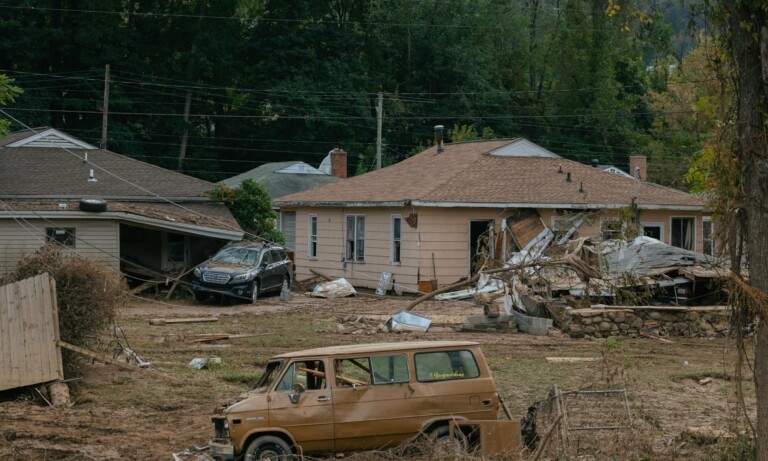Guide to Savannah GA Flood Insurance and Disaster Assistance
Navigating Flood Insurance and Disaster Assistance: A Comprehensive Guide for Homeowners in Savannah, Pooler, Richmond Hill, and Statesboro, GA
Flooding is a significant risk for many Georgia homeowners, especially in areas like Savannah, Pooler, Richmond Hill, and Statesboro. As someone born in Savannah and deeply connected to this region, I understand firsthand the challenges our communities face when it comes to flood risks.
Whether it’s from hurricanes, tropical storms, or heavy rainfall, understanding flood insurance, the claims process, and how to access disaster assistance can make all the difference when disaster strikes.
This guide is designed to walk you through everything you need to know to protect your home and recover if the worst happens.
Understanding Flood Zones in Coastal and Inland Georgia
Flood zones are categorized by FEMA based on the level of flood risk in different areas. Knowing your flood zone is crucial to understanding your insurance needs and the potential risks to your property. Growing up in the Savannah area, I’ve seen how different parts of our region face unique flood risks, from the coastal areas of Savannah and Richmond Hill to the more inland communities like Pooler and Statesboro.
Here’s a breakdown of the most common flood zones in these areas:
Zone A
This high-risk zone includes areas with a 1% annual chance of flooding, also known as the “100-year floodplain.” However, these areas don’t have detailed flood hazard assessments, which can lead to higher insurance premiums. We have a video sharing my experience in buying a property that’s mapped into Flood Zone A:
Implications for Homeowners: If your property is in Zone A, flood insurance is mandatory if you have a mortgage from a federally regulated lender.
Zone AE
Like Zone A, Zone AE is also high-risk, but it includes more detailed studies that show the base flood elevation (BFE), which is the level that floodwaters are expected to reach during a 100-year flood.
Implications for Homeowners: Homes in Zone AE are at significant risk, and knowing your property’s elevation relative to the BFE can help you understand how much flood insurance is necessary and whether you should take steps to elevate your home.
Zone X
This zone is considered low to moderate risk, where the annual chance of flooding is less than 0.2%. It’s often outside the 100-year floodplain but still within the 500-year floodplain.
Implications for Homeowners: While flood insurance is not mandatory in Zone X, it’s still highly recommended. Flooding can and does happen in these zones, often due to unexpected heavy rainfall or infrastructure failures.
Zone V
This zone is along the coast and is subject to high-velocity wave action from storm surges. Properties in this zone face extreme risk, not just from flooding but also from the impact of waves.
Implications for Homeowners: Flood insurance is mandatory in Zone V, and premiums can be particularly high due to the severe risks involved. Homeowners may need to meet stricter building codes to minimize risk.
To learn more about Flood Zone V and coastal zones, click below for your video guide for coastal zones in 2024.
Understanding these zones helps you make informed decisions about flood insurance coverage and mitigation efforts. For example, homeowners in Statesboro, which generally falls into Zone X, might not face as high premiums as those in Savannah’s Zone V, but the risk remains significant enough to warrant consideration of flood insurance.
The Importance of Flood Insurance for Georgia Homeowners
Flood insurance is a critical safeguard for your home. Without it, you may find yourself facing overwhelming costs after a flood. Here’s why flood insurance is essential for homeowners across Savannah, Pooler, Richmond Hill, and Statesboro:
Flood Damage is Not Covered by Standard Homeowners Insurance
Many homeowners mistakenly believe that their standard insurance policy covers flood damage, but this is rarely the case. Flood insurance, whether through the National Flood Insurance Program (NFIP) or a private insurer, is the only way to ensure you’re protected against flood losses.
High Risk in Coastal Areas
Savannah and Richmond Hill, with their proximity to the coast, face a particularly high risk of flooding from hurricanes and storm surges. Growing up near these areas, I’ve seen how devastating coastal flooding can be, making flood insurance not just a necessity, but a critical part of protecting your home.
Inland Flood Risks
While Pooler and Statesboro are more inland, they are not immune to flooding. Heavy rainfall, drainage issues, and overflow from local rivers and streams can cause significant damage. Flood insurance provides peace of mind and financial protection in these situations.
Mandatory Flood Insurance Requirements
If you live in a high-risk flood zone and have a mortgage from a federally regulated lender, flood insurance is not optional—it’s required. Even if you’re in a low-to-moderate-risk zone, lenders may still require coverage, especially after recent floods in your area.
Affordability and Coverage Options
The cost of flood insurance varies based on your property’s location, elevation, and flood risk. Homeowners in higher-risk areas like Savannah and Richmond Hill may pay more, but it’s a small price compared to the potential cost of flood damage. In lower-risk areas like Statesboro, premiums can be more affordable, making it an accessible option for many homeowners.
The Process of Filing a Flood Insurance Claim
When your home is flooded, filing an insurance claim can be one of the most daunting tasks you’ll face. Flood insurance claims are notoriously complex and time-consuming. Here’s what you need to know to navigate this process effectively:
Immediately Document the Damage
As soon as it’s safe to do so, begin documenting all the damage. Take photos and videos of every affected area in your home, and make a detailed list of damaged items, including their age and condition.
Tip: Don’t throw away any damaged items until the insurance adjuster has seen them unless they pose a health risk. Keep any receipts for emergency repairs as well.
Prevent Further Damage
Make temporary repairs to prevent further damage to your home. For example, cover a damaged roof with a tarp or board up broken windows. These temporary fixes are crucial, and your insurance may reimburse you for these expenses.
Contact Your Insurance Company
Notify your insurance company as soon as possible to start the claims process. Provide them with all the necessary documentation, including your policy number and the evidence you’ve gathered.
The Adjuster’s Role
An insurance adjuster will be assigned to assess the damage. Be present during the adjuster’s visit to ensure all damage is accounted for. It’s important to point out any hidden damage, such as mold growth or structural issues, that may not be immediately visible.
Understanding the Settlement Offer
After the assessment, you’ll receive a Proof of Loss document outlining the adjuster’s findings and the settlement amount. Review this document carefully. If you believe the offer is too low or doesn’t cover all your damage, you have the right to dispute it.
Navigating the 60-Day Appeal Process
If you disagree with the settlement or if your claim is denied, you have 60 days from the date you receive the denial or settlement offer to file an appeal. This appeal must be submitted in writing, and you should include any additional evidence or documentation to support your case.
Tip: Consider seeking a second opinion from a contractor or public adjuster to help build a strong appeal.
Be Prepared for a Long Process
Flood insurance claims can be complex and take time to resolve, especially after widespread disasters. Patience is essential, but don’t hesitate to follow up regularly with your insurance company to keep your claim moving forward.
When Flood Insurance Isn’t Enough: Accessing Additional Assistance
Even with flood insurance, the costs of repairing and rebuilding after a flood can be overwhelming. Here’s what to do if your insurance payout isn’t enough—or if you don’t have flood insurance at all:
FEMA Disaster Assistance
If a Presidential Disaster Declaration is issued for your area, you may be eligible for FEMA assistance. This can include grants for temporary housing, emergency repairs, and other critical needs.
For Insured Homeowners: FEMA grants can supplement your insurance payout, helping to cover gaps in coverage, such as personal property or additional living expenses.
For Uninsured Homeowners: If you don’t have flood insurance, FEMA grants can help cover basic repairs and immediate needs. However, these grants are typically limited and won’t cover all your losses.
SBA Disaster Loans
The U.S. Small Business Administration (SBA) offers low-interest disaster loans. Unlike disaster assistance these loans must be paid back. they typically can be up to $250,000 over a 30 year period with low interest. These also are credit based with some criteria so you want to remember that.
Information contained on this page is provided by an independent third-party content provider. This website make no warranties or representations in connection therewith. If you are affiliated with this page and would like it removed please contact editor @producerpress.com









